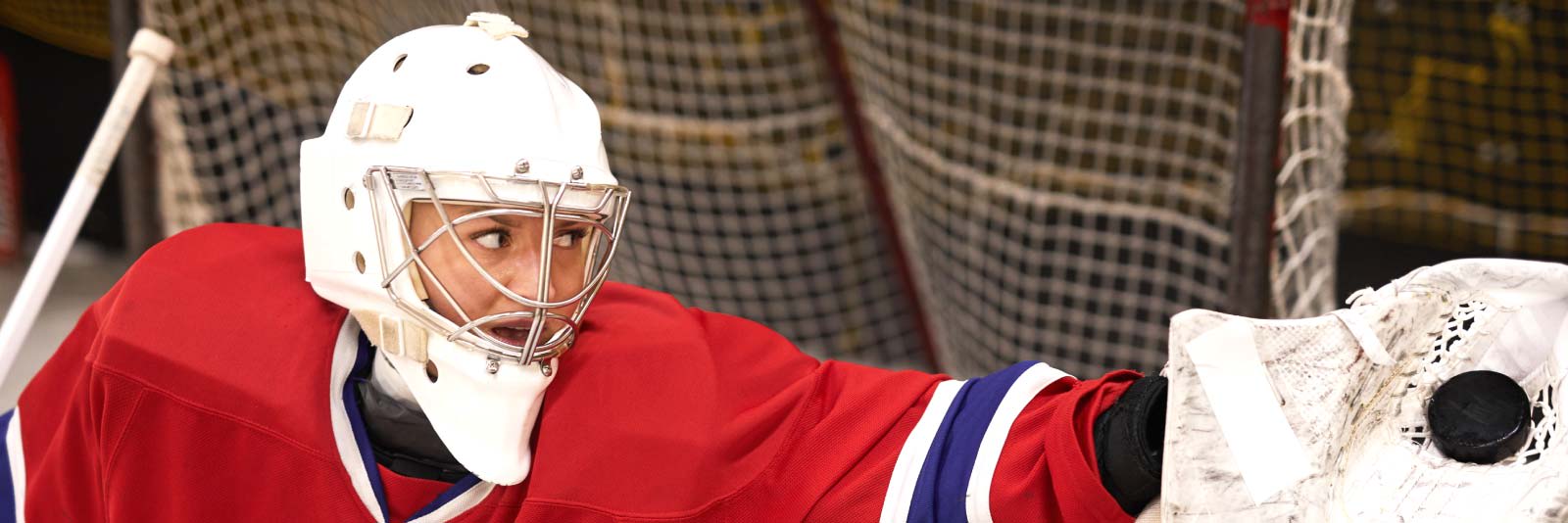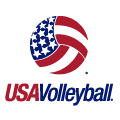Women’s Hockey Recruiting Guidelines: What Do College Coaches Look For?

“How important is speed in hockey?” “What are the women’s recruiting guidelines?” “What is hockey sense and why does it matter?” College coaches are asking and looking for specific criteria and skills for each hockey position. This section looks at the hockey skills needed for each position and the expectations that college coaches have for athletes at the different division levels.
Quick Links
Hockey skating: How important is speed in women’s college hockey?
What is the most important skill in hockey? Compared to high school and travel hockey, college hockey is played at a much faster pace. Because of this, college coaches favor recruits who have raw athleticism, including hockey speed and coordination. These skills allow athletes to handle the transition to college hockey more confidently. For a recruit who relies less on hockey speed and more on stick skill and hockey sense, they may have a hard time adjusting to the fast pace of the college game.
Women’s college hockey recruiting guidelines (all positions)
| NCAA D1 (Tier 1) | NCAA D3 (Tier 2) | ACHA (Tier 3) | |
| High School Experience | Top Prep School, MN Varsity HS | Top Prep School, MN Varsity HS | Varsity HS team |
| Travel Hockey Experience | AAA travel team | AA or AAA travel team | No travel hockey experience |
How to play NCAA Division 1 women’s hockey
Tier 1 goalie: Division 1 college coaches recruit hockey goalies that remain alert on the ice and react quickly and fearlessly in the cage. Tier 1 goalies can quickly move up and down and side to side with strong lateral skating ability when defending the goal. They are strong leaders that communicate with the team throughout the game, serving as another set of eyes on the ice for the defense. These athletes can play the puck and have great rebound control.
Tier 1 defenseman: What do college coaches look for in a Division 1 hockey defenseman? First, coaches want athletes with a strong physical presence on the ice, which means solid height and weight, as well as confidence and drive. Next, Division 1 college coaches are looking for athletes that move fluidly around the rink, have quick lateral movement and are versatile defensemen that can make offensive plays and position themselves in front of the net to prevent scoring opportunities. Lastly, to play at the Division 1 level, recruits need to have a strong hockey IQ, which allows them to read the ice well and anticipate their opponents’ actions.
Tier 1 winger: To be an NCAA Division 1 winger, recruits must be able to prove that they can make a scoring impact. Tier 1 wingers are strong on the boards and physically able to win battles in the corners. These athletes are fast skaters that react quickly once they have taken possession of the puck. They create scoring opportunities and are consistent at scoring goals with a strong shot.
Tier 1 center: College coaches are looking for elite, tier 1 athletes to play center on an NCAA Division 1 program. Centers cover more of the rink than any other position, which means they must be fast and strong skaters. They are also called to be flexible on the ice, playing both defense and offense. These athletes win face-offs consistently and quickly react once they’ve gained possession of the puck. Tier 1 centers successfully make challenging passes and goals.
How to play NCAA Division 3 women’s hockey
Tier 2 goalie: Division 3 college coaches recruit goalie talent that demonstrates good skating, controlled puck handling skills and leadership ability. These athletes cover the cage efficiently with good lateral movements and fast-twitch muscles. As leaders on the ice, tier 2 goalies communicate well with the defensemen and serve as an extra set of eyes on defense. These goalies can control rebounds and handle the puck when in possession.
Tier 2 defenseman: Tier 2 defensemen are recruited primarily by NCAA Division 3 college coaches. These athletes have a dominating physical presence, but they do not consistently use this to their advantage. As strong skaters, these athletes can make quick lateral movements when defending the cage. Tier 2 defensemen can prevent scoring opportunities most of the time by effectively positioning themselves in front of the cage. These athletes are known for their good high hockey IQ, which allows them to control the game and predict their opponents’ actions.
Tier 2 winger: Tier 2 wingers have the skillset that is most compatible with NCAA Division 3 hockey programs. Coaches can rely on these athletes to create scoring opportunities that most of the time result in a goal. When battling for the puck on the boards and in corner battles, these athletes are typically able to gain possession of the puck. These athletes make the majority of goals that they attempt from most angles. Tier 2 wingers have fast-twitch movements, good reaction time and puck handling skills.
Tier 2 center: Tier 2 centers are strong athletes that are best matched with an NCAA Division 3 hockey program. Division 3 college coaches focus on recruiting centers that are able to rely on their good skating skills to quickly cover the rink and switch from offense to defense fluidly. After winning a face-off, these athletes can maintain possession and create offensive opportunities for the team. As experienced athletes, tier 2 centers can make challenging passes and score from multiple angles.
How to play ACHA women’s hockey
ACHA women’s hockey is split up into three divisions, just like the NCAA. Many ACHA Division 1 programs are comparable to NCAA Division 3 programs and can even have the talent to beat these teams. ACHA Division 1 coaches recruit athletes across all positions who have A, AA and even AAA team playing experience.
Tier 3 goalie: Tier 3 goalies are best suited for an ACHA club hockey program. Competing for a club hockey program gives these athletes an opportunity to improve their reaction time, agility, fast-twitch reaction time, vocal leadership and coverage of the cage. As goalies, these athletes are not as flexible and agile in the cage as NCAA-level goalies, so they only stop a small percentage of goals shot by their opponent. These athletes are less vocal and alert, making them less valuable to the defense as they try to stop the opponent’s offense and reclaim puck possession. Tier 3 goalies play the puck and maintain control of the rebound after preventing a scoring opportunity but aren’t always able to play the puck out of the zone.
Tier 3 defenseman: An ACHA hockey program is the perfect opportunity for a tier 3 defender to remain competitive in college. These athletes are not as physically dominating on the ice, making it challenging to position themselves in front of the goal to stop their opponents from scoring, but they are good at gap control. While good skaters, these athletes have room to improve on their quick lateral movement. These athletes are more stay-at-home defensemen, rather than defense- and offense-minded players. These athletes do not have the same competition experience as higher tier athletes, therefore their hockey IQ and ability to read the ice well and their opponents is not as strong.
Tier 3 winger: ACHA club hockey programs look for tier 3 wingers to compete on their teams. While these athletes put good effort into creating scoring opportunities, they make fewer goals than higher-tier athletes. Tier 3 wingers give up possession when playing the board and in corner battles more often than they gain possession. These athletes are good skaters with decent reaction time and puck handling skills.
Tier 3 center: Tier 3 centers have the skills that best align with those of centers playing on an ACHA club hockey team. While these athletes can transition from offense to defense, they have trouble keeping up with the fast pace of the game in the process. They can improve their quickness in winning faceoffs, which would allow them to rely less on other teammates to gain possession of the puck. These athletes can improve on their passing skills and shooting goals, especially under pressure.
NCAA vs. ACHA hockey
ACHA hockey programs are not funded by college institutions, which means these programs do not have the athletic budget to offer athletic scholarships. Instead, these programs rely heavily on student services and player fees for funding each season. Generally known for being well organized and supported by the campus community, recruits will find these non-varsity programs at institutions across the country. The top ACHA programs are equal to or better than NCAA Division 3 programs.
What is hockey sense and why does it matter?
What separates a truly elite hockey athlete from the crowd? Hockey sense, also known as hockey IQ, is the ability to be fully present during the game, reading the ice, following the puck, communicating with teammates and remaining aware of the athlete’s own position on the ice. During camps, tournaments, combines and in highlight video, college coaches look to identify recruits with a good hockey sense. How does the recruit manage in quick-paced situations? How well does the athlete understand and execute strategic plays? How quickly can an athlete evaluate a situation and determine what action to take?
















